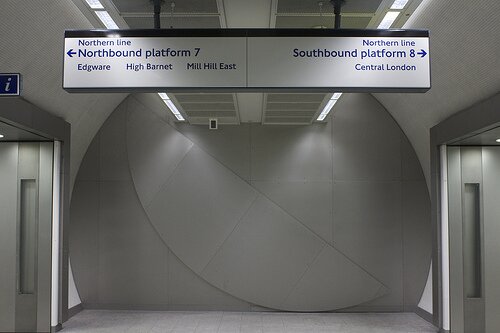It’s not often that I feel the need to pick on artists, or describe how bad someone’s work is – I don’t think these artists or their work deserves any PR. I’m not an artist myself – certainly not a professional or talented one – but I do know when someone tries to pass of absurdity as art.
Very recently, I was barely able to control myself from writing about the somewhat disappointing exhibition at the Prince’s School of Traditional Arts (PSTA) in London. Whilst I genuinely think PSTA used to aim for the right things and have great respect for the Prince and what he does – the quality of work has been declining. After all, the school is taking on a more commercial approach and as with all things that become about business, quality gets substituted for quantity. I hope Prince Charles is noticing that, even though it may not be high up on his list of things to fix.
There is some art, though, in London, which reflects on the poor taste and corruption of those who promote art in this city. I recently noticed, by mistake, the horrible piece of what I can only call a wall by Knut Henrikson at King’s Cross Station between the northbound and southbound Northern line platforms. How on God’s good earth is this thing a piece of art? Is it just me, or have the staff at Transport for London (TFL) and some of the seriously distasteful, modern ‘know it all’ art loving bloggers seriously gone blind. Here is a small preview of what TFL and some of our tasteless modern art ‘want to be’ cool collectors have been admiring:
Now, where in the world does that strike you as a piece of art. Here is a definition of the word art from Merriam Webster:
“the conscious use of skill and creative imagination especially in the production of aesthetic objects.”
I’m not picking on Knut Henrikson; I am simply suggesting that people, whether in London, Paris or New York, seriously need to get their eyesight checked and need not think of art as cool simply because TFL promotes it to be or because collecting rubbish has become a ‘cool’ thing. Credit should be given where it is due. I can assure you that TFL is probably paying some intern to select junk that goes up across London as ‘art’. Do you really want to follow an intern or a bureaucrat who works at TFL? Seriously, if you are someone who appreciates art, surely you have more taste and better places to look for guidance than that.
Kudos to Henrikson’s dealer or PR consultant, though. You’ve all made the world a worse place and art a more degrading profession – only for ‘financial’ and ‘marketing’ reasons – just the kind of values fine art and its champions stand for.



